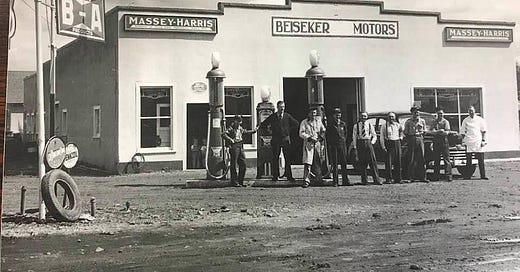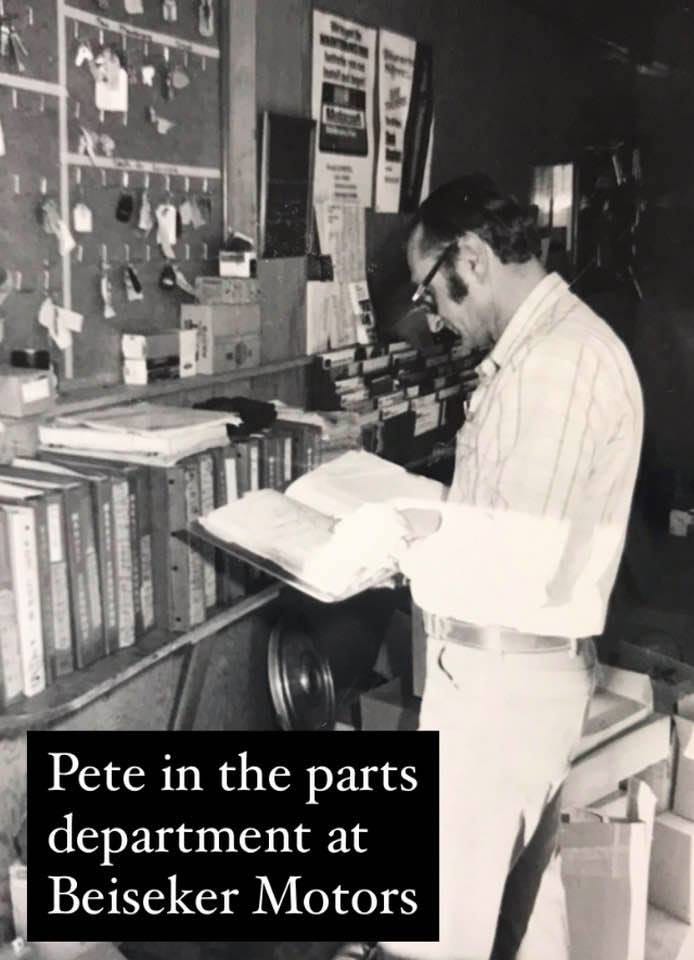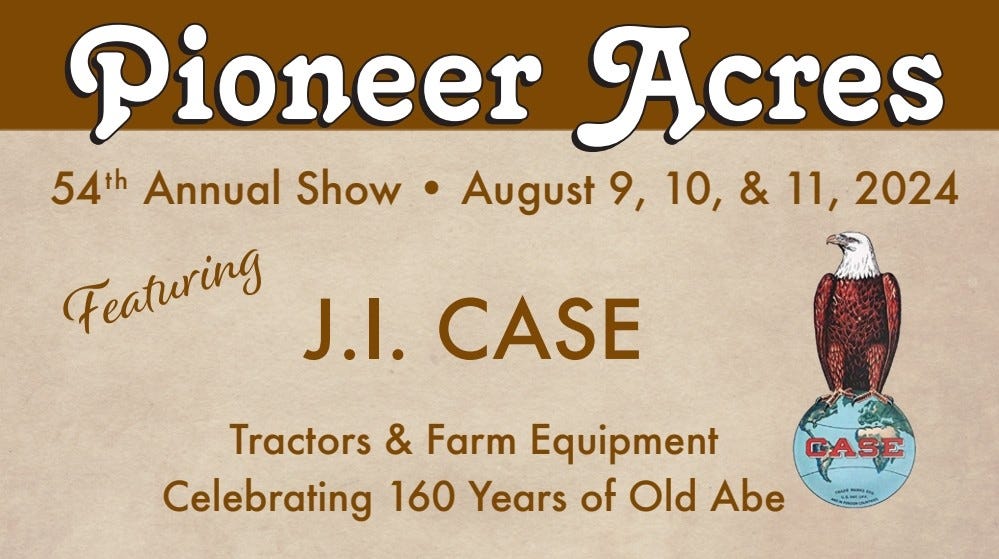60 years of Beiseker Motors
The story of a local farm implement dealer compiled by historian Shelly McElroy
We are proud of the displays, artifacts and exhibits that we present at Pioneer Acres that feature the history of agriculture and the Industrial Revolution from about 1900 to about 1950. However, something we have noticed is that the story of local tractor dealerships has been underdeveloped. And it was a big part of the story. Keoma, Irricana and Kathryn all had tractor dealerships. This week we will be sharing a two-part interview with Pete and Maxine Schmaltz highlighting that history.
Pete Schmaltz’s family arrived in southern Alberta area from the United States in 1907 and have now spent four generations in the Beiseker area. The family farmed, but there was also a network of businesses that were required to provide support in farming communities. His father, also Peter Schmaltz, opened a service station and garage in 1924 on the Number Nine Highway and when those businesses proved successful, opened a Massey Harris dealership in the 1920s, adding a Ford Lincoln franchise later that same decade.
“It was tough,” Peter recalls. “We got new combines and we had to pay Massey for them before we even got them. It was the same with the Ford vehicles. Later, they financed them.” Making the investment at a time when people were driving Bennett Buggies was a gamble. A barber who lived in Beiseker at the same time had nowhere to cut hair, so Peter’s father agreed to let him offer haircuts in the showroom!
Those were hard, lean years in agriculture, but the company was destined to survive. It would eventually sell Elephant Brand Fertilizer and other items such as washing machines. The trio of brothers were Felix “Soup” Schmaltz and Leo “Bean Sack” Schmaltz (so named because he always had a bag of jellybeans on his person) and Peter.
Peter was originally planning to be an electrician but when his father died in the 1950s, he was left a share in the garage and decided to return to Beiseker. Peter was a parts man and typically came to the dealership around 7.30 a.m. The mechanics would arrive shortly afterwards. Peter credits their happy customers to the good employees who worked at Beiseker Motors – they never had to fire anybody. The Massey Ferguson parts department was also something Peter was proud of.
The 50s and 60s saw huge changes in agricultural technology, including the introduction of diesel engines. A highlight one year saw the dealership sell a record setting eight Massey combines. The Massey 21s did not have a cab, but a lot of farmers mounted a 12-watt bulb so they could see what they were doing in the dark. In those days combines and cars were all metal, “not plastic like now,” Peter says. At harvest, the dealership expanded their hours, staying open until 9.00 p.m. to help their customers who were working late in the fields. Like vets in calving season, they had to respond to the needs of their clientele.
In all those years, a day that stood out to Peter was the time they donated a car for a raffle to the Lions Club and one of their own employees won it! Another highlight was getting to know Kenneth W. Harrigan. In 1954 as a young man Harrigan chose to do a field assignment in Calgary because of the positive experience he had had with the group from Beiseker Motors. “Besides, the Stampeders were the top of the league that year and I always liked to be with the winning team!” Harrigan wrote later. That young man went on to become the President of Ford Canada, and the group director of sales in Europe. Over the years he kept in touch with the Schmaltzs, recalling the good times he had in Beiseker.
Maxine and Peter have been married for 63 years. They met in Grade 11 and were married in 1957. They raised three children and lived in Beiseker for twenty-five years. “You think housewives don’t work? I was a housewife all my life. I raised our kids at home, cooked, cleaned house,” Maxine says. Once a year, Maxine and her sisters-in-law invaded the dealership and did a deep clean. The hardest part of the job was taking the rubber hoses off the walls and everything off the shelves so the whole thing could be washed down. One year they also painted.
The Schmaltzs note the cost of a house and the cost of a combine have skyrocketed since they were first married. Other changes? Indoor plumbing, electricity, and computers. “In those days, you were prepared,” Maxine notes. “We had coal furnaces and lights hung up on the ceiling. If the power went out, we carried on.”
As far as their social experiences in their community, Peter notes that when he wanted a night out, he avoided his own village and planned to visit Irricana or Acme instead. “If you stay in your own town, usually that’s when you get into an argument,” he observes. “One sports day I went to Beiseker and that was it.”
But Maxine adds that for many years, Beiseker Motors had a double life. There was a furnace room at the back of the building that was adapted to a party stop! Farmers would stop by at closing time and a spontaneous fete would break out. “Even the Mounties would join us once in a while,” Peter laughs. “If they got hungry, they would put cans of beans in the furnace,” Maxine reveals, while Peter adds, “And roast wieners!” (How the Beiseker Motors Special Baked Beans and Wieners did not wind up being reviewed by a restaurant critic we will never know!) “Those were good days, I’ll tell you,” Peter jokes. “No one ever got drunk – not really.”
(continued in Part Two)






